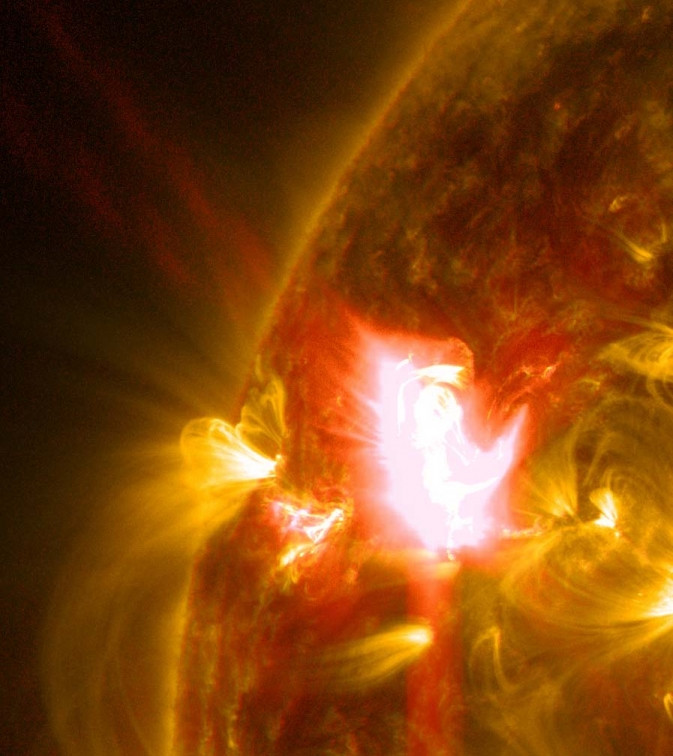Nasa Releases 'Graceful Eruption' Footage Showing Solar Flare Several Times Larger than Earth

Nasa has released a video showing a solar flare several times larger than Earth filmed from its Solar Dynamics Observatory.
The solar flare, which was classed as "mid-level" - meaning it was far smaller than the largest X-class solar flare – was described as a "graceful eruption", with footage showing the Sun twisting and spewing out a blob of plasma into space.
Scientists at Nasa said that, while the plasma blob emitted from the M6.5 solar flare was several times larger than our planet, it posed no threat to Earth.
"Solar flares are powerful bursts of radiation. Harmful radiation from a flare cannot pass through Earth's atmosphere to physically affect humans on the ground, however – when intense enough - they can disturb the atmosphere in the layer where GPS and communications signals travel," Nasa said.
Experts at the Solar Dynamics Observatory added: "Powerful magnetic forces above an active region on the Sun twisted and pulled at a blob of plasma until it lost its connections and blew out into space. The resultant swirling presented its own kind of graceful, almost ballet-like bends and sweeps.
"To offer some kind of size perspective that blob, before it broke away, was easily larger than several Earths. The event was observed in extreme ultraviolet light over about 5.5 hours."
The M-class solar flare followed shortly after an X-class flare that threatened to cause a geomagnetic storm.
Karen Fox, of Nasa's Goddard Space Flight Centre, said: "Solar flares are powerful bursts of radiation. Harmful radiation from a flare cannot pass through Earth's atmosphere to physically affect humans on the ground, however - when intense enough - they can disturb the atmosphere in the layer where GPS and communications signals travel."
© Copyright IBTimes 2025. All rights reserved.






















